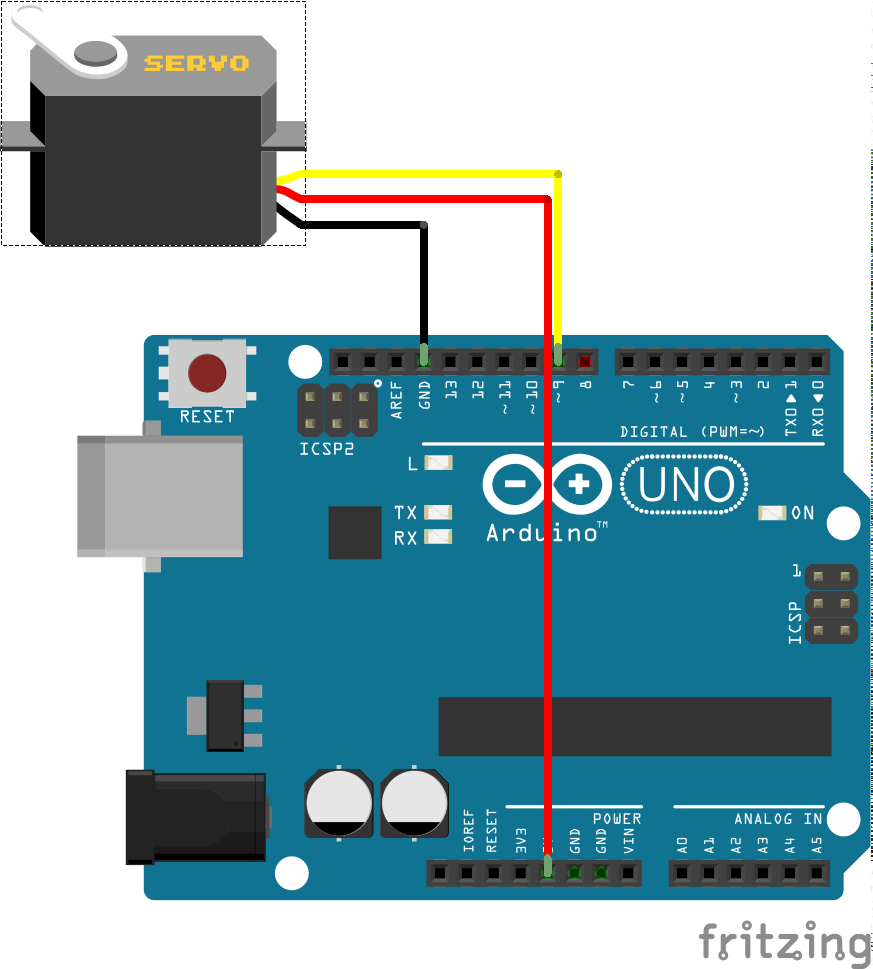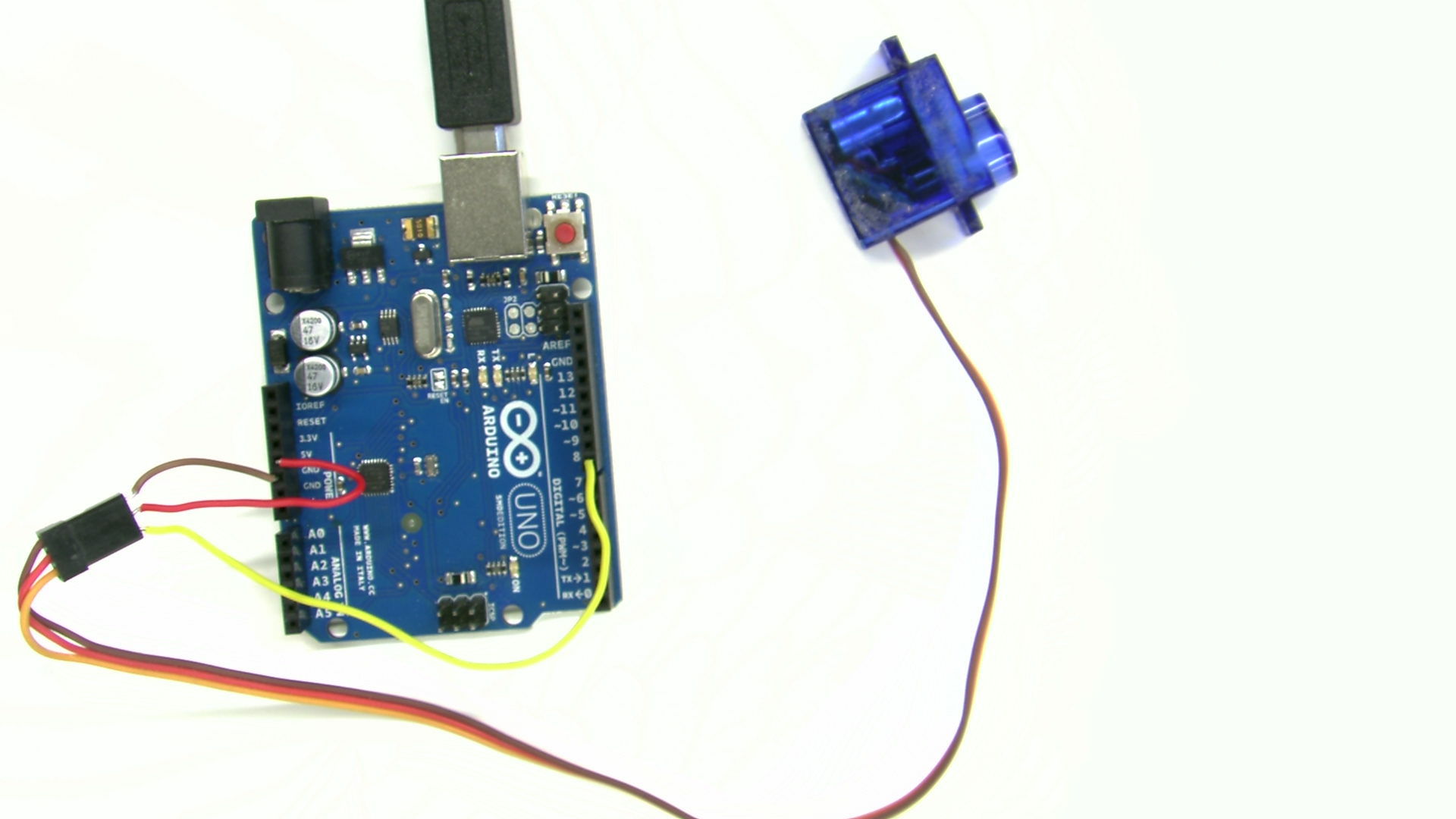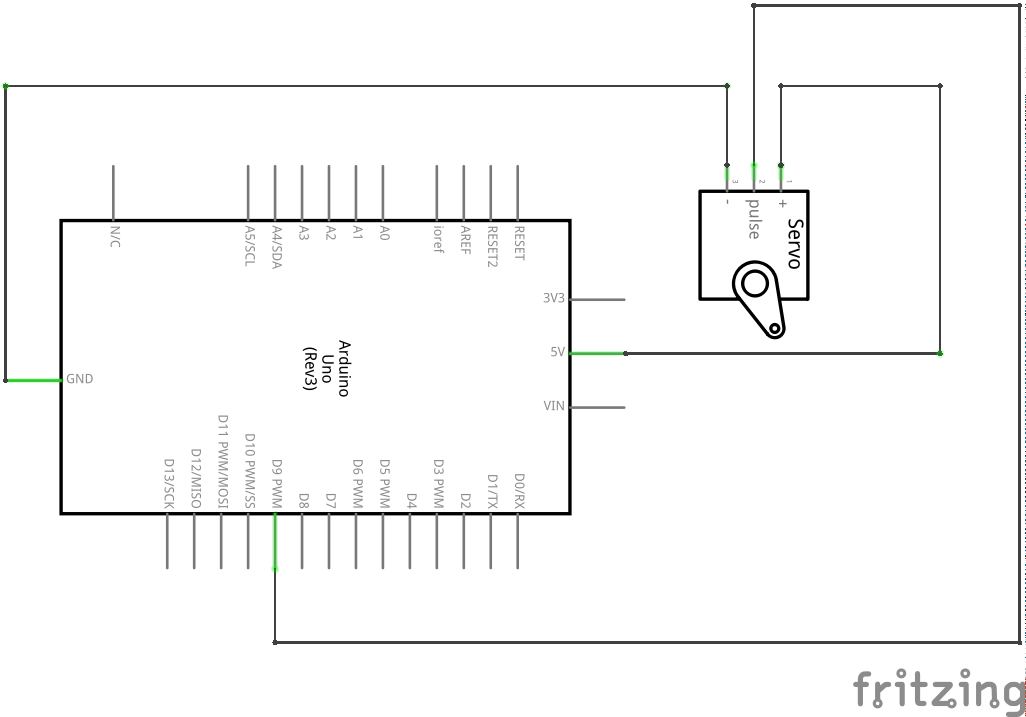2.1.24. Exercise: Servo Sweep¶
2.1.24.1. Objective¶
Control a hobby servomotor module.
Hobby servos are feedback-controlled motors which move an output shaft to a specified position. Internally they use a potentiometer to measure the actual position. The internal circuit compares the actual and commanded position and generates positive and negative motor current pulses to operate a tiny gearmotor. They are a very convenient modular way to create controlled physical motion.
The commanded position is specified using a specific format of PWM in which pulses with duration approximately 1-2 ms repeat at approximately 50 Hz. The different pulse widths correspond to different positions. Note that this a significantly different waveform than the motor PWM, since the duty cycle is always very low, i.e., the pulse on-time is always much shorter than the cycle time.
2.1.24.2. Steps and observations¶
- Load and run the Servo/Sweep sketch. This uses the Servo library, an included add-on to the base library.
- Observe the servo motion.
- Observe the PWM command signal on the oscilloscope.
- Try varying the numbers governing the motion limits.
- Try varying the delay to change the speed.
- Determine the maximum speed possible.
2.1.24.3. Comments¶
Note that trajectories and speed control are only possible by issuing position commands at intervals.
As a challenge, rewrite the program to avoid delay() and operate two
servos simultanously on different trajectories. This will be taken up in
more detail in an upcoming exercise.



2.1.24.4. Other Files¶
- Fritzing file:
servo-sweep.fzz